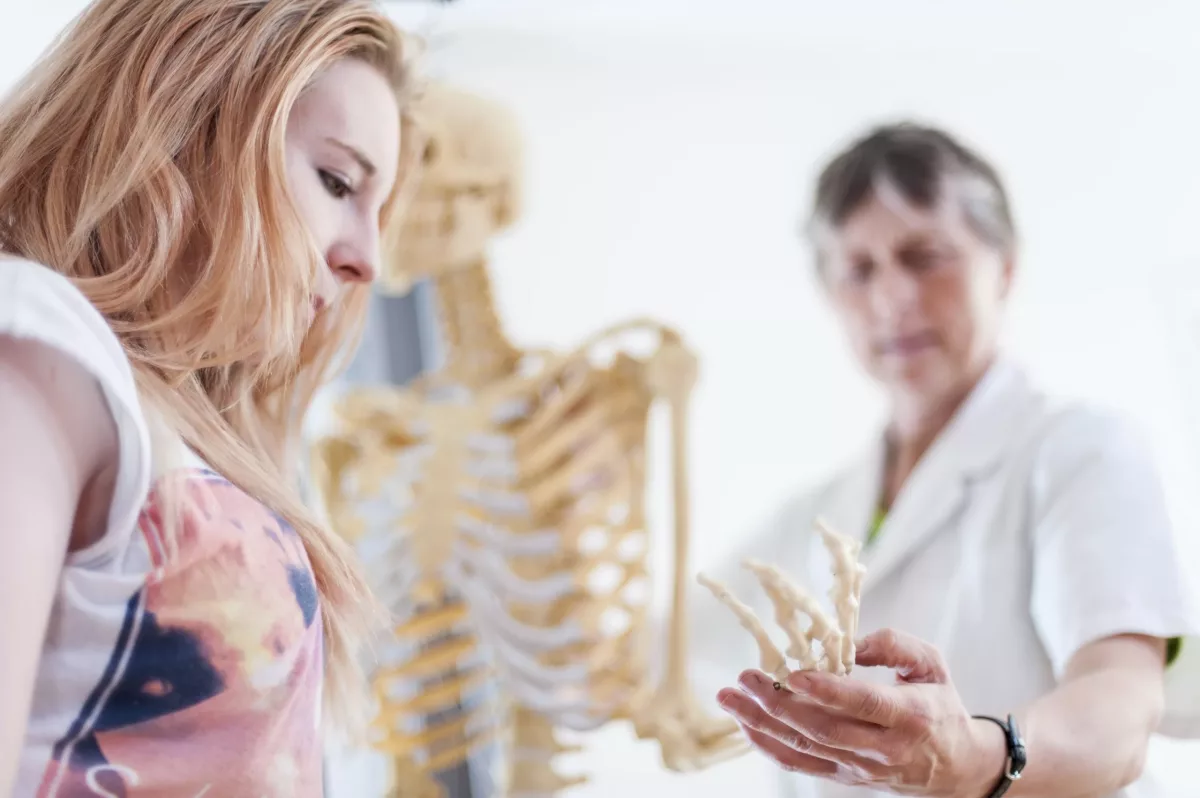A rare genetic disorder that causes bone overgrowth is called Weaver syndrome. People with this condition are frequently very tall and may have specific facial features (such as wide-set eyes). Some of them may also develop intellectual or physical disabilities. However, people with Weaver syndrome can live healthy lives despite the inability to cure the disorder.
In some cases, this genetic disorder is called Weaver-Smith syndrome. It may also cause changes to the shape, appearance, and size of the head and affect other muscles in the body.
Each person who is diagnosed with this syndrome experiences different symptoms. One of the most common characteristics of Weaver syndrome is tall stature. However, they also may have poor coordination, less muscle tone, and bent or distorted hands or feet.
According to some research, this condition has affected approximately 50 people worldwide, which makes it a very rare genetic disorder.
Furthermore, this syndrome significantly increases the risk of neuroblastoma (a type of cancer that often affects children under 5 years old). Other children are at increased risk of congenital heart disease (it means that heart defects are present at birth), which requires immediate surgery. With early diagnosis and proper treatment, people with Weaver syndrome can live through adulthood.
Symptoms
In some cases, the signs of Weaver syndrome are present before birth. Doctors identify them on a prenatal ultrasound. They may notice that bones are longer than average and diagnose macrosomia (it means that the baby is larger than average). When the baby has this syndrome, it has a longer body length or increased birth weight. Commonly, infants with Weaver syndrome have a low-pitched cry. Rarely, babies may develop symptoms of this syndrome within a few months after birth.
If your baby develops this syndrome, doctors may tell you that the baby has “advanced bone age”. It means that bones are growing faster compared to a baby without this syndrome. Most children with Weaver syndrome have a different appearance of the head or facial features. These include:
- Broad forehead
- Epicanthal folds (additional skin layers over the inner corner of the eyes)
- Down-slanting palpebral fissures (eyelids that slant down)
- Macrocephaly (enlarged head)
- Low-set or large ears
- Micrognathia (a condition in which the lower jaw bone is smaller)
- Longer groove between the nose and upper lip
It is common for people with Weaver syndrome to have other health problems. For example:
- Congenital heart defects (heart problems present at birth)
- Clubfoot or metatarsus adductus
- Knees or elbows are not straightened
- Joint deformities in the toes
- Intellectual disabilities that range from mild to severe
- Wide thumbs and fingers that cannot straighten (also known as camptodactyly)
- Abdominal muscle weakness, which may lead to a hernia
- Scoliosis
- Tightness in the leg or arm muscles
Causes
This is a type of genetic disorder that happens when a gene called EZH2 mutates (changes). Mutations of this gene cause bone overgrowth and multiple reactions that could affect other genes throughout the body. This chain reaction explains why children with Weaver syndrome experience problems with muscles, bones, and other organs.
Healthcare providers do not know what exactly causes EZH2 gene mutations. Approximately 50% of people with Weaver syndrome inherit one copy of the abnormal gene from one biological parent. For instance, there is a 50% chance that the abnormal gene will be passed to the baby if the father or mother has it. This is available for each pregnancy.
However, this syndrome does not always pass from biological parents. Sometimes, babies develop it during pregnancy even if their parents do not have this mutated gene.
What Are The Possible Complications of Weaver Syndrome?
Those who develop this genetic disorder may also experience some complications, especially if it is not treated. Check below some examples:
- Skeletal anomalies (such as abnormal spine curvature, advanced bone age, or foot structure problems)
- Contractures (these include joint problems)
- Hypertelorism
- Cognitive development problems (such as intellectual disabilities)
- Behavioral problems
- Cardiovascular issues (such as mitral valve prolapse, ventricular septal defect, and others)
- Central nervous system disorders (such as dilated ventricles)
- Umbilical hernias
- Hypotonia or hypertonia (these conditions cause problems with the muscle tone)
This document does not contain all possible complications of this syndrome. However, if you notice that your child experiences any of the previous ones, immediately contact your healthcare professional.
How Can I Prevent Weaver Syndrome?
There is no way to prevent this genetic disorder because no one knows what exactly causes it. The only way to reduce the risk of this syndrome is through genetic tests that should be performed before pregnancy.
Diagnosis
Physicians usually diagnose this condition by performing a genetic test to check for the EZH2 gene mutation. This test involves multiple blood samples being tested in the laboratory. Sometimes, genetic testing is used to exclude other gene mutations that cause other genetic disorders. It is also known as a genetic testing panel. It helps confirm Weaver syndrome and exclude other genetic disorders (such as Sotos syndrome) that cause similar symptoms.
Treatment
While there is no way to cure this syndrome, the treatment focuses on relieving the symptoms and preventing serious complications. Usually, the treatment plan for your child includes the following treatments and therapies. For example:
- Behavioral healthcare for intellectual disabilities
- Cardiovascular treatment that helps reduce the effects of congenital heart conditions
- Supportive care for school and learning (including a tutor or counselor)
- Orthopedic surgery or other procedures that help treat problems with joints, hands, or feet
- Physical therapy that helps improve coordination and muscle tone
Sometimes, doctors may recommend other treatments to improve your quality of life. For more details, discuss it with your physician.
Frequently Asked Questions
How do I know if I’m at risk?
The only way to determine whether you are at risk of developing Weaver syndrome or not is through genetic testing or a family history of the disease.
When should I seek care?
People with Weaver syndrome need regular checkups. Immediately contact your healthcare professional if any of the following symptoms occur. Examples include:
- Weakness or paralysis
- Breathing problems
- Abdominal swelling
- Pale skin
- Lumps under the skin
- Extreme tiredness
- Fever
- Cough
- Diarrhea
- Appetite changes
- Bulging eyes
Sometimes, previous symptoms may indicate neuroblastoma.
What is the life expectancy of a person with Weaver syndrome?
People with this syndrome usually have a normal lifespan, especially if the condition is found early and they get appropriate treatment. If you have additional questions, ask your healthcare provider.




